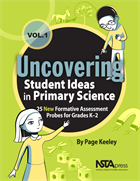Summer eating and learning about the needs of seeds
By Peggy Ashbrook
Posted on 2013-07-30
 I am enjoying eating fresh blueberries every day—before that it was mangos. Neither of them grew in my neighborhood but I do have a large enough sliver of sunlight to grow herbs such as mint, rosemary, thyme, fennel and oregano. At the preschool, children are harvesting cucumbers. Sarah Pounders writes about promoting fruits and vegetables as snacks for children, in the National Gardening Association’s KidsGardening online resource. She also shares ideas for planting a fall garden, something I want to try again this fall.
I am enjoying eating fresh blueberries every day—before that it was mangos. Neither of them grew in my neighborhood but I do have a large enough sliver of sunlight to grow herbs such as mint, rosemary, thyme, fennel and oregano. At the preschool, children are harvesting cucumbers. Sarah Pounders writes about promoting fruits and vegetables as snacks for children, in the National Gardening Association’s KidsGardening online resource. She also shares ideas for planting a fall garden, something I want to try again this fall.
 We can reinforce science concepts about the needs of plants every time we talk about plants or garden with children. While volunteering at a community science event at a public library, I talked with children ages 5-12 about the needs of plants as they did a simple activity—planted a lima bean in a cup. Who knew that lima beans would be so popular with this age group!? Many of the children knew at least one or two of the needs of plants—water, sunlight, nutrients, and soil (support)—and some children also added “air,” amended by a few older children to “oxygen.” It isn’t surprising that young elementary school age children don’t think that plants use air, or if they think air is the same substance as oxygen. These are just two of the naive ideas or misconceptions that teachers can address while teaching about the needs of plants. We can also be sure to say that (most) plants get nutrients from the soil and make their own food using sunlight, so children don’t think that plants get their food from soil. The temperature needs of plants to sprout seeds and grow are another need that children often neglect to think about.
We can reinforce science concepts about the needs of plants every time we talk about plants or garden with children. While volunteering at a community science event at a public library, I talked with children ages 5-12 about the needs of plants as they did a simple activity—planted a lima bean in a cup. Who knew that lima beans would be so popular with this age group!? Many of the children knew at least one or two of the needs of plants—water, sunlight, nutrients, and soil (support)—and some children also added “air,” amended by a few older children to “oxygen.” It isn’t surprising that young elementary school age children don’t think that plants use air, or if they think air is the same substance as oxygen. These are just two of the naive ideas or misconceptions that teachers can address while teaching about the needs of plants. We can also be sure to say that (most) plants get nutrients from the soil and make their own food using sunlight, so children don’t think that plants get their food from soil. The temperature needs of plants to sprout seeds and grow are another need that children often neglect to think about.
 The formative assessment probe, “Needs of Seeds” by Page Keeley in the February 2011 NSTA journal, Science and Children, helps students express their understanding of what seeds need to grow into seedlings. With a text level for grade 3, the probe is useful for early childhood teachers to read to prepare ourselves for investigations and discussions about growing plants from seeds. In Keeley’s book for grades K-2, Uncovering Student Ideas in Primary Science, Volume 1: 25 New Formative Assessment Probes for Grades K-2, the Teacher Notes for the probe “Seeds in a Bag” describe activities to further student understanding.
The formative assessment probe, “Needs of Seeds” by Page Keeley in the February 2011 NSTA journal, Science and Children, helps students express their understanding of what seeds need to grow into seedlings. With a text level for grade 3, the probe is useful for early childhood teachers to read to prepare ourselves for investigations and discussions about growing plants from seeds. In Keeley’s book for grades K-2, Uncovering Student Ideas in Primary Science, Volume 1: 25 New Formative Assessment Probes for Grades K-2, the Teacher Notes for the probe “Seeds in a Bag” describe activities to further student understanding.
The Science of Spring website is designed to help children learn about seeds and how they grow. It is part of Science NetLinks, developed by the American Association for the Advancement of Science. It features photographs of seed investigations carried out by children and suggests books for reading.
Children might ignore a garden if they aren’t allowed to contribute to it in some way. By planting seeds and harvesting produce, children are involved with food production and learn about the needs of plants. Because teachers will be responsible for getting volunteers or for doing all the garden maintenance themselves, only plant the size garden you have time to nurture to harvest. Maybe just a lime bean in a pot!
Disclaimer: The views expressed in this blog post are those of the author(s) and do not necessarily reflect the official position of the National Science Teaching Association (NSTA).


